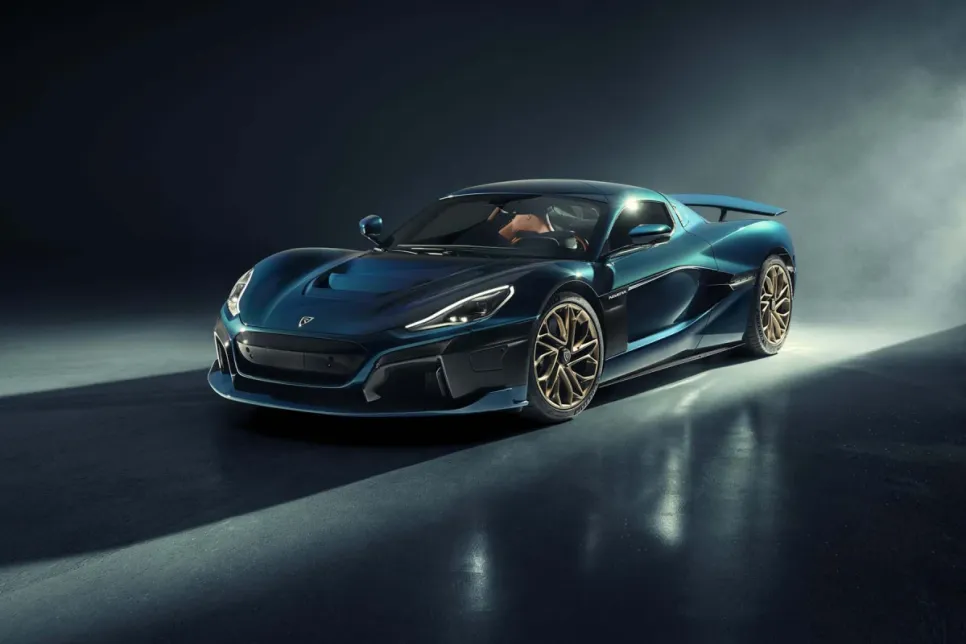US Approves Nvidia Exports to China
The US government officially approved the sale of Nvidia’s second-most-advanced AI processor to Chinese companies.

Rimac Automobili unveiled the production version of the C_Two, now becoming the Nevera, an all-electric, 1914hp, 258mph, €2m hypercar designed and engineered to unleash an unprecedented level of performance.
The Nevera is the production-ready iteration of the Rimac C_Two concept car, which was revealed at the International Geneva Motor Show in 2018. Since then, Rimac’s engineers have refined their new flagship on every level during an extensive development program, in the pursuit of the ultimate electric hypercar driving experience. With the majority of key components of the Nevera developed in-house at Rimac’s HQ in Croatia, all systems have been improved and enhanced since the initial prototypes to deliver on the ambitious performance targets set for at the beginning of the project in 2018.
“This is it. This is the car I had in mind when I embarked on the ‘impossible’ journey ten years ago. All our hard work has resulted in the Nevera - our record-breaking hypercar. This car was born to outperform, and to raise the bar, redefining the norm for performance cars. And not only in performance - but as an all-around package When we first revealed the C_Two, we set our targets extremely high. There was nothing else that could even come close to matching the car’s cutting-edge electric powertrain and extreme performance. But for us, that was only the starting point“, explains Mate Rimac, Founder and CEO of Rimac Automobili.
“Everyone at Rimac is driven by curiosity and a desire to push things to the absolute limit. With its combination of everyday use and 1914hp performance, the Nevera proves what is possible when there are no restraints placed on technology, development, or ambition. We have now unveiled a car that pushes the hypercar market to a higher level, we have utilized the full potential of the electric powertrain today, proving what we’ve always been saying - that electric hypercar, in the form of the Nevera, is beyond exciting, and that is as thrilling on the track, as it is cosseting crossing continents. We will be making just 150 examples of the Nevera, every single unit crafted in Croatia from passion and admiration for cars“, according to Mate Rimac.
Underlining his own commitment to the project, Mate Rimac will personally test and sign off each of the Neveras, before they are delivered to customers from the company’s current production site on the outskirts of Zagreb, Croatia.
Fittingly, the Nevera bears a proud Croatian name and one that truly reflects the prodigious performance the car can unleash in the blink of an eye. The name given by the locals to a quick, unexpected and mighty Mediterranean storm, that races across the open sea off Croatia, a nevera is extremely powerful and charged by lightning.
Appearing with exceptional speed and potency, Rimac’s next-generation hypercar shares the Nevera’s name and looks set to leave a similarly disruptive effect on the global hypercar market. And, like the force of nature it is named after, it is just as adept at transforming its character in an instant - from assured and comfortable grand tourer to ultra-focused performance machine.
Rimac favors lean and effective engineering at every stage, and that philosophy is exemplified in the form-follows-function nature of the Nevera’s timeless, elegant design. It is applied to every single detail, including Rimac’s signature ‘cravat’ feature, which is incorporated into its flanks.
“Since the 17th Century, the necktie has provided a symbol of Croatian strength and identity, and we first paid tribute to it on our Concept_One hypercar in 2011,“ reveals Rimac Director of Design, Adriano Mudri ‘And, like every element of the car’s design, it is there to provide a key function of the Nevera’s performance, serving as an air intake for the rear cooling systems.“
A comprehensive raft of changes to the Nevera’s bodywork, air diffusers and intakes has delivered a 34 per cent improvement in aerodynamic efficiency over the early prototypes. The profile of the bonnet, the shape of the pillars and the design of the diffusers, splitters and radiators have all been intensively analysed and refined to improve airflow and downforce. Inlets and cooling channels have been painstakingly developed to increase the cooling efficiency of both the brake and powertrain systems, resulting in a 30 per cent improvement at low speeds and a seven per cent enhancement at high speeds.